Vigeland Park
One of the most beautiful memories from my year of Education Abroad in Norway was formed in the very first week of my stay in June, 1969. A group of us students took the tram from the University of Oslo to Frogner Park, the largest and one of the oldest parks in the city. In the heart of the park is “Vigeland Park,” the world’s largest sculpture park by a single artist, August Vigeland.
It was late in the evening, around 11:00 p.m., but in this “Land of the Midnight Sun,” the sky was still filled with a dusky twilight. The nude figures towering over me almost seemed to come to life in the dim light, the giants shimmering with mystery and magic.
So, when I learned that our Rick Steves tour group would be visiting the Vigeland sculptures on our first afternoon in Oslo, I could hardly contain my excitement. We entered Frogner Park through the wrought iron gates and proceeded down the sidewalk to the first sculptures, 58 enormous statues on pillars standing on the 100-meter bridge. This time, the statues were brightly illuminated by a blazing sun. Not so magical as the first visit, perhaps, but I could now take my time admiring the details of every statue.
 |
| Entrance to Frogner Park |
 |
| On the bridge, looking back toward the park entrance |
 |
| Frogner Park lake below the bridge |
The Bridge Sculptures
The Vigeland statues that line the bridge, and those farther into the park, are a celebration of all aspects of humankind. All the figures, from the tiny babies to the old men and women, are naked. Vigeland explained this choice, saying, “It’s only when you put clothes on people that you can find their religion or where they are from. When you are naked, you can be anyone, anywhere, at any time.”
The human figures are depicted in all moods and activities – some joyful, some pensive, some angry, some affectionate, and some sad. Parents and grandparents frolic with children, children play or pout, couples embrace or fight, men show off their prowess, women dance.
Parents and grandparents frolic with their children
Children play or pout or ponder
 |
| One of the most famous statues in the park is Sinnetaggen, "The Angry Boy" |
Couples embrace and play
Men show off their power

And women dance
The Serpent Pillars
The Fountain
At the far end of the bridge is the Fountain, a giant bowl held up by six giant men of different ages spilling water into the basin below. The Vigeland Museum explains that these men may be interpreted as toiling with the burdens of life. The fountain is surrounded by twenty bronze trees, representing man’s relationship to nature. The trees are filled with smaller human figures, starting with a tiny baby and progressing around the fountain through childhood, adolescence, and adulthood to the final figure, an old man.
 |
| Joan |
 |
| Bruce |
 |
| Tony and Maggie |
The Monolith Platform
Above the fountain stands a high platform containing “The Monolith,” which is a true monolith, carved from a single block of granite weighing several hundred tons. The Monolith is astounding, covered from bottom to top with 121 human figures of all ages intertwined. Vigeland refused to explain the meaning of this sculpture, so it is open to one’s individual interpretation. The Vigeland Museum describes it as “a kind of vision of resurrection, and our longing and striving for spirituality.” For me, it had a darker tone, showing never-ending human struggling, striving with difficulty to reach some high goal.
I found much more pleasure in the 36 groups of figures that surround the Monolith, which are another representation of the “Circle of Life.” Some of them truly touched my heart – three boys gazing upward, young girls braiding one another’s hair, an old woman comforting an old man.
The Wheel of Life
Descending from the platform to the far side of the park is the last sculpture, “The Wheel of Life.” The Vigeland Museum provides the perfect description of both the Wheel and the park itself. “The wheel is a symbol of eternity, and here it is designed as a rotating wreath of women, men, and children holding onto each other for all eternity. This sculpture summarizes the entire dramatic theme of the park: a sculptor's reflections on the journey of human life from cradle to grave, through joy and sorrow, through dreams, fantasy, hope, and eternal longings.”
The Wheel of Life. Magical indeed!
 |
| Looking back as we exit the park. |
After the warm afternoon, our tour group had worked up a healthy appetite, and our day ended at Olso's harbor near the Radhus, the City Hall, with a traditional Norwegian dinner of reindeer, lingonberry sauce, and potatoes at Rorbua Restaurant.
 |
| Oslo Harbor with Akershus Fortress in the background |
 |
| The Radhus - Oslo's City Hall |
 |
| Rorbua Restaurant for traditional Norwegian dining |
 |
| Our group inside Rorbua Restaurant |
 |
| Reindeer and Lingonberries - Yum! |
Final Note: When I returned home, I was curious to learn more about this place that I had loved for so many years. The Vigeland Museum stands on the grounds of Frogner Park and still contains the plaster casts of Vigeland’s sculptures. Of course, he did not do the actual stone carvings. He created the models, which were then created in stone by various stone sculptors.
The story of the creation of the Monolith is interesting. Preparations for its construction began in 1924. Vigeland took ten months to create a clay model, followed by a plaster model. The monolith was carved inside a large wooden shed, with the plaster model for reference. It took three stone masons - Nils Jonsson, a Swede, Karl Kjaer, a Dane, and Ivar Brue, a Norwegian – fourteen years to complete the Monolith, which was finally revealed to the public in 1944. Their story is told in an article by Maren Kvamme Hagen, a Norwegian journalist.
The Secret Story Behind Norway's Most Popular Tourist Attraction
For a video tour of Vigeland Park, the reader can find narrated videos about the park on Rick Steves' YouTube channel.


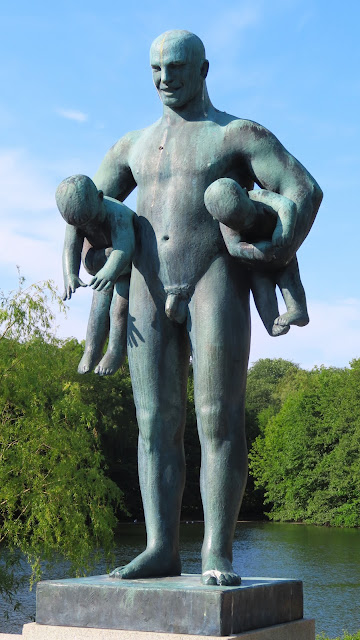

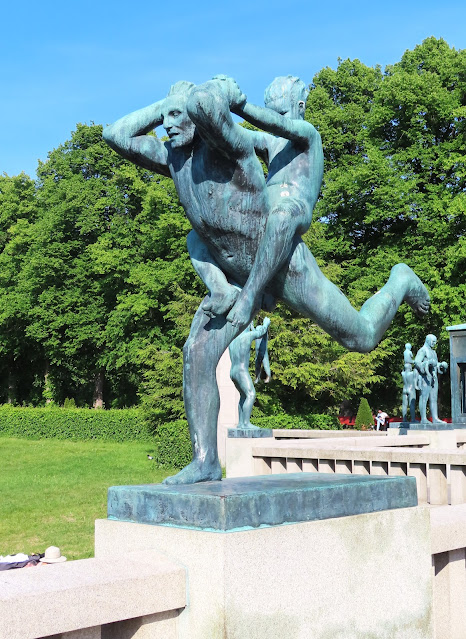
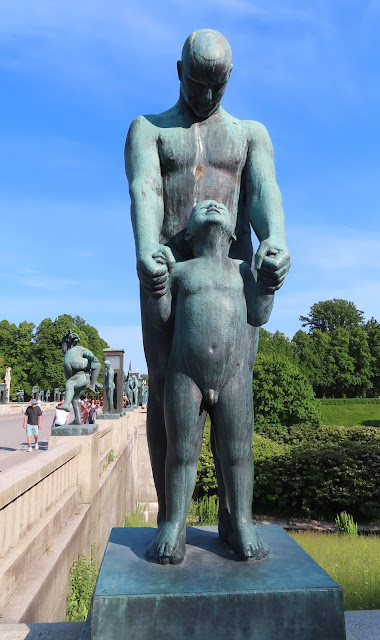







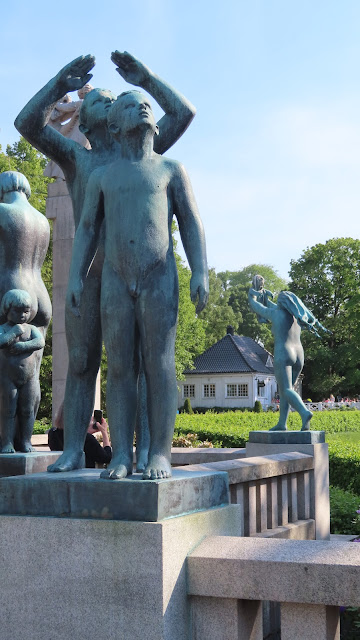







































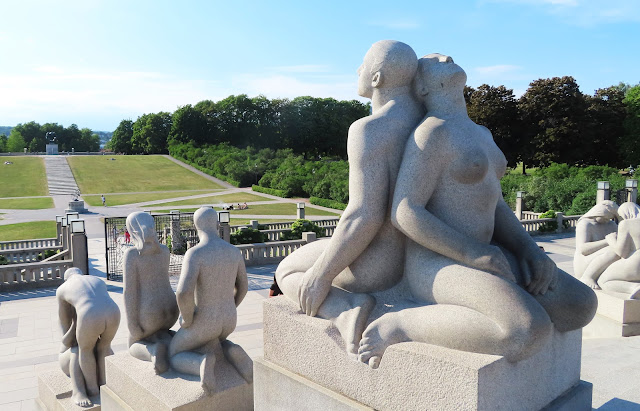






















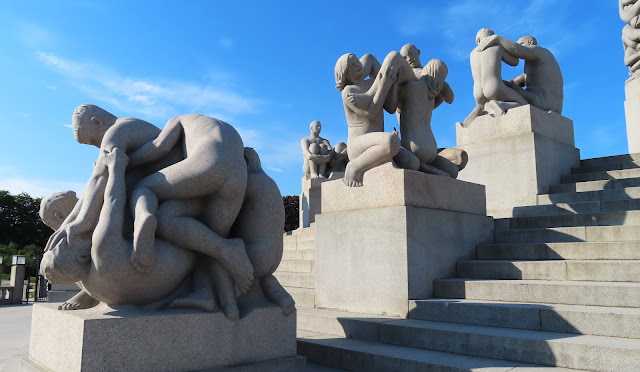
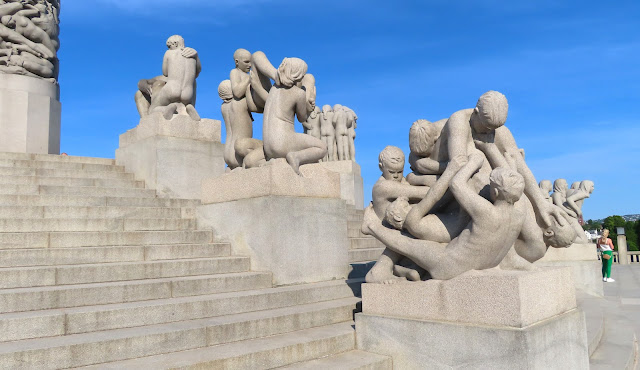




No comments:
Post a Comment